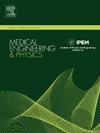ResGloTBNet: An interpretable deep residual network with global long-range dependency for tuberculosis screening of sputum smear microscopy images
IF 1.7
4区 医学
Q3 ENGINEERING, BIOMEDICAL
引用次数: 0
Abstract
Tuberculosis is a high-mortality infectious disease. Manual sputum smear microscopy is a common and effective method for screening tuberculosis. However, it is time-consuming, labor-intensive, and has low sensitivity. In this study, we propose ResGloTBNet, a framework that integrates convolutional neural network and graph convolutional network for sputum smear image classification with high discriminative power. In this framework, the global reasoning unit is introduced into the residual structure of ResNet to form the ResGloRe module, which not only fully extracts the local features of the image but also models the global relationship between different regions in the image. Furthermore, we applied activation maximization and class activation mapping to generate explanations for the model's predictions on the test sets. ResGloTBNet achieved remarkable results on a publicly available dataset, reaching 97.2 % accuracy and 99.0 % sensitivity. It also maintained a high level of performance on a private dataset, attaining 98.0 % accuracy and 96.6 % sensitivity. In addition, interpretable analysis demonstrated that ResGloTBNet can effectively identify the features and regions in the input images that contribute the most to the model's predictions, providing valuable insights into the decision-making process of the deep learning model.
ResGloTBNet:一个具有全球远程依赖的可解释的深度残差网络,用于痰涂片显微镜图像的结核病筛查
肺结核是一种高死亡率的传染病。人工痰涂片镜检是一种常见而有效的结核病筛查方法。但费时费力,灵敏度低。在本研究中,我们提出了一个融合卷积神经网络和图卷积网络的框架ResGloTBNet,用于痰涂片图像分类,具有较高的判别能力。在该框架中,将全局推理单元引入到ResNet的残差结构中,形成ResGloRe模块,既能充分提取图像的局部特征,又能对图像中不同区域之间的全局关系进行建模。此外,我们应用激活最大化和类激活映射来为模型在测试集上的预测生成解释。ResGloTBNet在一个公开可用的数据集上取得了显著的结果,达到了97.2%的准确率和99.0%的灵敏度。它还在私有数据集上保持了高水平的性能,达到了98.0%的准确率和96.6%的灵敏度。此外,可解释分析表明,ResGloTBNet可以有效识别输入图像中对模型预测贡献最大的特征和区域,为深度学习模型的决策过程提供有价值的见解。
本文章由计算机程序翻译,如有差异,请以英文原文为准。
求助全文
约1分钟内获得全文
求助全文
来源期刊

Medical Engineering & Physics
工程技术-工程:生物医学
CiteScore
4.30
自引率
4.50%
发文量
172
审稿时长
3.0 months
期刊介绍:
Medical Engineering & Physics provides a forum for the publication of the latest developments in biomedical engineering, and reflects the essential multidisciplinary nature of the subject. The journal publishes in-depth critical reviews, scientific papers and technical notes. Our focus encompasses the application of the basic principles of physics and engineering to the development of medical devices and technology, with the ultimate aim of producing improvements in the quality of health care.Topics covered include biomechanics, biomaterials, mechanobiology, rehabilitation engineering, biomedical signal processing and medical device development. Medical Engineering & Physics aims to keep both engineers and clinicians abreast of the latest applications of technology to health care.
 求助内容:
求助内容: 应助结果提醒方式:
应助结果提醒方式:


